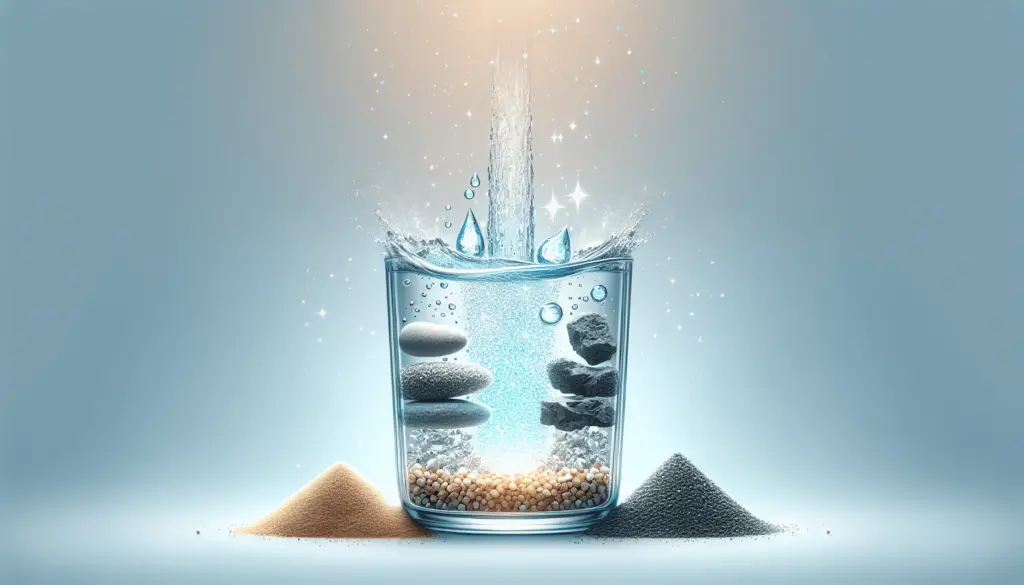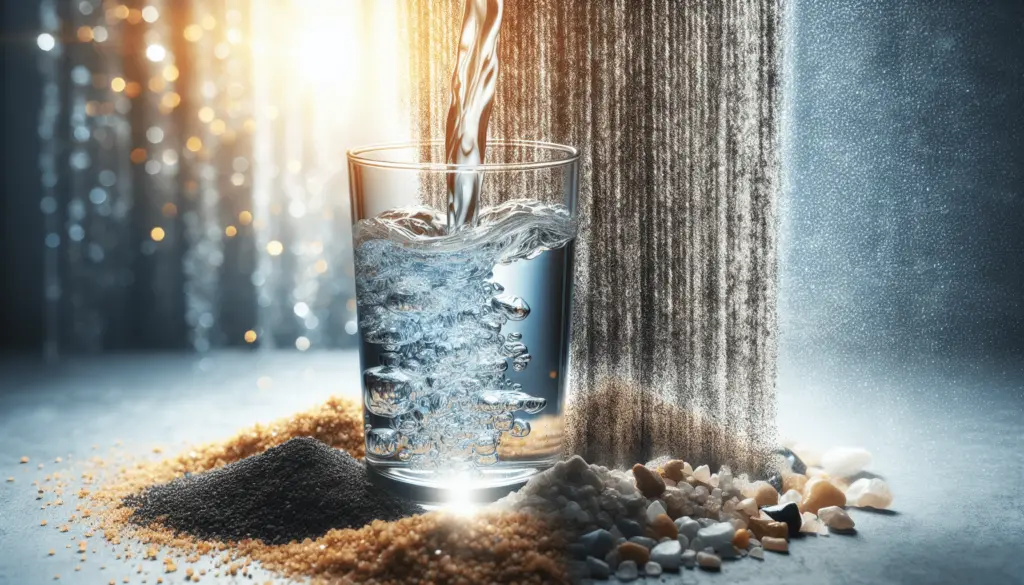Imagine you find yourself in a situation where clean drinking water is scarce or contaminated. How do you effectively purify water to ensure it’s safe for consumption? In this article, we will explore various methods and techniques that can be used to purify water, no matter the circumstances. From simple DIY solutions to advanced filtration systems, you will discover practical and reliable ways to obtain clean and potable water, even in the most challenging situations. So, let’s dive in and learn how to purify water in any situation, shall we?
Boiling water
Boiling water is one of the easiest and most effective methods of purifying water. Before boiling, it is important to ensure that the water is relatively clear of debris. You can achieve this by filtering the water through a clean cloth or using a fine mesh strainer. This will help remove any large particles and make the water safer to consume.
To boil water, simply place a pot or kettle on the stove and fill it with the filtered water. Turn the heat to high and wait for the water to come to a rolling boil. Once it reaches a boil, let it continue boiling for at least one minute to ensure that any harmful bacteria or parasites are killed. If you are at higher altitudes, it may be necessary to boil the water for longer to compensate for the lower boiling point.
It is important to note that boiling water does not remove chemical contaminants, such as heavy metals or pesticides. It is primarily effective in killing microorganisms and making the water safe to drink in terms of biological contamination.
Using a water filter
Water filters are devices that remove impurities and contaminants from water, making it safe to drink. There are several types of water filters available, such as activated carbon filters, ceramic filters, and reverse osmosis filters. Each type has its own advantages and limitations, so it is important to select the right water filter based on your specific needs and the quality of the water source.
When selecting a water filter, consider factors such as the filtration capacity, flow rate, ease of use, and maintenance requirements. If you are planning to use a water filter in outdoor or emergency situations, a portable water filter may be the most suitable option. These filters are compact, lightweight, and designed to filter water on the go.
Using a portable water filter is relatively straightforward. Most filters come with instructions on how to assemble and use them. Typically, you will need to fill a container or reservoir with the untreated water, attach the filter, and either squeeze or pump the water through the filter. This process removes contaminants and produces clean, drinkable water.

Chemical disinfection methods
Chemical disinfection methods rely on the use of chemicals to kill or inactivate microorganisms in water. Chlorine tablets, iodine tablets, and water purification drops are commonly used for this purpose.
Chlorine tablets are effective in killing bacteria, viruses, and parasites. To use chlorine tablets, simply follow the instructions provided by the manufacturer. Typically, you will need to add the recommended number of tablets to a specified volume of water and wait for a specific contact time before consuming the water.
Iodine tablets work in a similar way to chlorine tablets, but may be more effective against certain types of microorganisms, such as cryptosporidium. The usage instructions for iodine tablets are similar to those for chlorine tablets.
Water purification drops, such as those containing chlorine dioxide, can also be used to disinfect water. These drops are typically added to a specified volume of water and allowed to react for a certain period of time before the water is safe to drink.
It is important to note that chemical disinfection methods may not be suitable for individuals with certain health conditions or sensitivities. Additionally, these methods do not remove chemical contaminants from the water.
UV water purification
UV water purification devices use ultraviolet light to kill or inactivate microorganisms in water. These devices are effective against bacteria, viruses, and protozoa. UV purification does not involve the use of chemicals and can be a reliable method for disinfecting water.
To use a UV water purifier, you will need to ensure that the device is charged or has fresh batteries. Simply immerse the UV lamp into a container filled with clear water and activate the device according to the manufacturer’s instructions. The water should be stirred or agitated during the purification process to ensure that all microorganisms are exposed to the UV light.
UV water purification is generally effective in providing safe drinking water. However, it is important to consider the limitations of these devices. They are not effective in removing chemical contaminants or particles from the water. Additionally, the effectiveness of UV purification may be reduced if the water is turbid or contains high levels of organic matter.

Solar water disinfection
Solar water disinfection, also known as SODIS, is a simple and low-cost method of purifying water using solar radiation. This method is particularly useful in situations where other purification methods are not available.
To use solar water disinfection, start by filling transparent bottles or containers with untreated water. The water should be clear, without any turbidity or suspended particles. Place the bottles in direct sunlight for a period of six hours on a sunny day or two days if the weather is cloudy. The UV radiation from the sun destroys bacteria, viruses, and parasites, making the water safe to drink.
It is important to note that SODIS is best suited for small-scale purification and may not be practical for large volumes of water. Additionally, this method does not remove chemical contaminants or improve the taste of the water.
Using activated charcoal
Activated charcoal is a highly porous form of carbon that can effectively remove impurities and contaminants from water. It works by adsorption, where impurities are physically trapped within the porous structure of the charcoal.
To use activated charcoal for water purification, you can either purchase commercially available activated charcoal filters or make your own filter using activated charcoal powder and a clean cloth or mesh. The charcoal should be packed into the filter material and the water should be poured through it. The charcoal will trap impurities, improving the quality of the water.
It is important to periodically replace or regenerate the activated charcoal to maintain its effectiveness. Additionally, activated charcoal does not remove dissolved salts, heavy metals, or chemical contaminants.
Distillation
Distillation is a method of water purification that involves heating water to produce steam, which is then condensed to produce purified water. This process effectively removes most impurities, including bacteria, viruses, chemicals, minerals, and heavy metals.
There are various DIY distillation methods that can be used, such as using a pot and lid, a solar distiller, or a homemade still. These methods typically involve heating the water in a container, collecting the steam, and condensing it to obtain purified water.
It is important to note that distillation can be a time-consuming and energy-intensive process. It may also not be suitable for purifying large volumes of water. Additionally, some volatile organic compounds may not be effectively removed through distillation.
Emergency water purification methods
In emergency situations where conventional purification methods are not available, there are alternative methods that can be used to make water safe to drink.
Household bleach can be used as an emergency water disinfectant. It is important to use only unscented bleach that does not contain any additional additives. Add approximately 1/8 teaspoon (8 drops) of bleach per gallon of water, mix well, and let the water stand for 30 minutes before consuming.
Hydrogen peroxide can also be used as a disinfectant in emergency situations. Add approximately 8 drops of 3% hydrogen peroxide per gallon of water, mix well, and let the water stand for 30 minutes before drinking.
In situations where sunlight is available, water can be purified by using solar disinfection methods. Fill clear containers with untreated water, place them in direct sunlight, and let them stand for at least six hours on a sunny day or two days if the weather is cloudy. This method helps to kill microorganisms in the water, making it safe to drink.
Water purification tablets
Water purification tablets are small, portable tablets that are dissolved in water to disinfect it and make it safe to drink. There are different types of water purification tablets available, such as those containing chlorine, iodine, or other active ingredients.
To use water purification tablets, simply follow the instructions provided by the manufacturer. Typically, you will need to add the recommended number of tablets to a specified volume of water and wait for a certain amount of time for the tablets to dissolve and disinfect the water. It is important to carefully read and follow the instructions for each specific type of water purification tablet, as the dosage and contact time can vary.
When using water purification tablets, it is important to consider any limitations or special considerations. Some tablets may have a distinct taste or odor, which can be improved by adding a flavoring agent or letting the water sit open to allow any residual taste to dissipate. Additionally, water purification tablets may not be effective in removing chemical contaminants or particles from the water.
Natural water purification methods
In addition to manufactured purification methods, there are also natural methods that can be used to purify water in certain situations.
Using sunlight and thermal treatment can be an effective method of purifying water in sunny climates. Fill clear containers with untreated water and place them in direct sunlight for several hours. The heat from the sun will help kill or inactivate microorganisms in the water, making it safer to drink.
Filtration through natural materials can also be used to remove impurities from water. This method involves passing water through layers of natural materials, such as sand, gravel, and charcoal, to trap and remove contaminants. It is important to ensure that the natural materials used for filtration are clean and free from any harmful substances.
It is worth noting that natural purification methods may not be as reliable or effective as manufactured methods. Factors such as water quality, environmental conditions, and the presence of certain contaminants can affect the efficacy of these methods.
